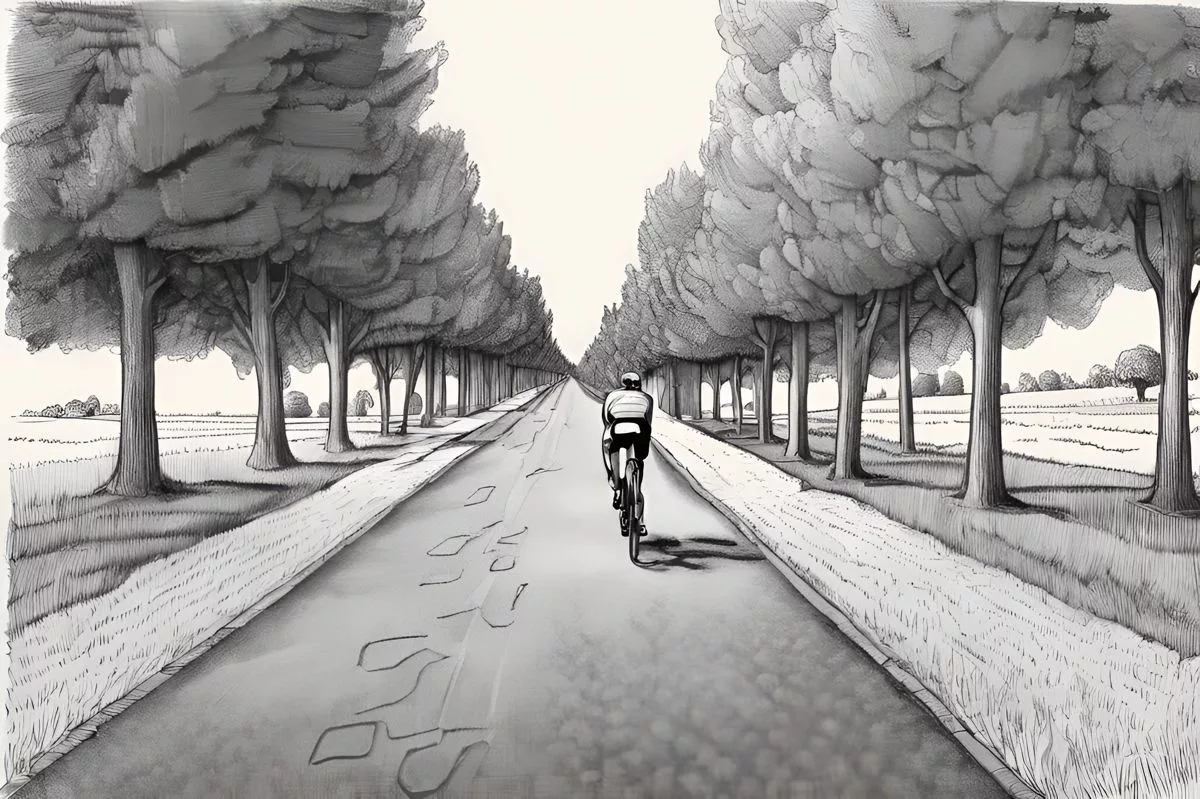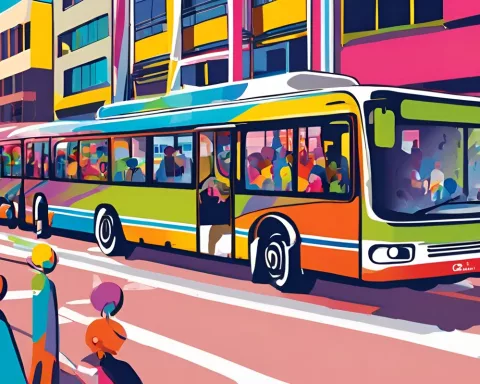Cape Town is transforming its cityscape to prioritize non-motorized transport such as bicycles and pedestrians. The Urban Mobility Directorate has formulated a plan to renovate and establish NMT facilities in various locales, taking into account community distinctiveness and encouraging community involvement through public information sessions and feedback channels. The plan aims to create a city that is more inclusive, accessible, and centered on its residents.
What is Cape Town’s plan for non-motorized transport?
Cape Town’s Urban Mobility Directorate has formulated a plan to establish and renovate non-motorized transport (NMT) facilities in various locales, prioritizing pedestrians and cyclists. The plan includes the installation of curbs, tactile paving, and segregated cycle lanes, while also considering community distinctiveness. Community involvement is encouraged through public information sessions and multiple channels for feedback. This initiative aims to create a city that is more inclusive, accessible, and focused on its residents.
Nestled in the heart of Cape Town, a city renowned for its unique urban landscapes and diverse neighbourhoods, a transformative plan is unfurling within the City’s Urban Mobility Directorate. This plan targets the renovation and establishment of non-motorized transport (NMT) facilities across several locales, including Bellville, Bishop Lavis, Pinelands, Woodstock, Salt River, and Observatory.
No longer are urban centres designed with vehicular mobility as the centrepiece. The modern cityscape prioritizes pedestrians, cyclists, and the integration of all inhabitants into the urban tapestry. This shift in perspective is evident in the NMT plan, aiming to create enclaves that are easily accessible to pedestrians and cyclists, underscoring Cape Town’s resolve to evolve into a city that puts its people first.
A Detailed Examination of the Plan
The plan presents an all-encompassing strategy dealing with numerous facets linked to NMT. It encompasses not only construction but also the enhancement and upkeep of NMT facilities to guarantee barrier-free accessibility. Aspects of this include the installation of curbs with drop-offs and tactile paving for individuals with visual impairments, and where appropriate, the provision of segregated cycle lanes.
Rob Quintas, the City’s Mayoral Committee Member for Urban Mobility, accentuated the collective responsibility in moulding the urban milieu. He encouraged residents to share their opinions and suggestions about the plan, underscoring the critical role that community feedback plays in ensuring that the proposed enhancements and infrastructure meet their requirements.
NMT and Community Distinctiveness
Each community boasts its unique personality and demands, and the plan recognises and honours these idiosyncrasies. For example, in Bellville, the strategy involves building NMT facilities along Frans Conradie Drive, Suikerbos Street, and Old Paarl Road. A parallel initiative is planned for Bishop Lavis, focusing on Robert Sobukwe Drive between Peter Barlow Drive and Valhalla Drive.
The plan aims to renovate and build NMT facilities along numerous main thoroughfares in Woodstock, Salt River, and Observatory, which include Main Road, Victoria Road, Sir Lowry Road, Lower Main Road, and more. These initiatives strive to improve road safety for pedestrians, cyclists, wheelchair users, the elderly, those with prams, and school-going children.
Harnessing the Power of Community Involvement
In a praiseworthy move, the City’s Urban Mobility Directorate has extended an invitation to local inhabitants and other relevant parties to provide their feedback on the plan until Monday, 3 June 2024. They have also set up public information sessions, offering a transparent forum for residents to acquire more knowledge about the plan and voice their opinions.
Residents are presented with multiple channels for submitting their suggestions, feedback, and input. These comprise written submissions at Subcouncils and libraries, and direct communication via email with the Public Participation Unit. This open request for public participation reinforces the City’s dedication to a comprehensive planning process that prioritises the views of its inhabitants.
Envisioning the Future of Urban Mobility
The NMT plan signifies a crucial leap in Cape Town’s progress towards developing urban settings that are more inclusive, accessible, and focused on its residents. By giving precedence to non-motorized transport, the city is endorsing a sustainable and fair approach to urban mobility.
Fundamentally, this initiative transcends infrastructure. It’s about redefining the city as a communal space where everyone, irrespective of age, ability, or method of transportation, can move without restrictions and in safety. It portrays a vision of a city where roads are more than mere paths for cars, but dynamic spaces that encourage social interaction and healthier living.
As the plan progresses, it invites all of us to contemplate our contribution to shaping the urban landscape. It provides a bright testament to the strength of collective action and collaborative planning, especially in matters that impact our daily lives and the communities we inhabit. It serves as a reminder that our cities’ future is not vested in concrete and steel, but in the vibrancy of its citizens and their ability to adapt and evolve.
What is the purpose of Cape Town’s non-motorized transport plan?
The purpose of Cape Town’s non-motorized transport plan is to prioritize pedestrians and cyclists by establishing and renovating NMT facilities in various locales. The plan aims to create a city that is more inclusive, accessible, and focused on its residents.
What aspects are included in the plan?
The plan encompasses not only construction but also the enhancement and upkeep of NMT facilities to guarantee barrier-free accessibility. Aspects of this include the installation of curbs with drop-offs and tactile paving for individuals with visual impairments, and where appropriate, the provision of segregated cycle lanes.
How does the plan take community distinctiveness into account?
The plan recognizes and honours the unique personality and demands of each community. For example, in Bellville, the strategy involves building NMT facilities along Frans Conradie Drive, Suikerbos Street, and Old Paarl Road, while in Bishop Lavis, the focus is on Robert Sobukwe Drive between Peter Barlow Drive and Valhalla Drive. The plan aims to renovate and build NMT facilities along numerous main thoroughfares in Woodstock, Salt River, and Observatory, which include Main Road, Victoria Road, Sir Lowry Road, Lower Main Road, and more.
How can the community get involved in the plan?
The City’s Urban Mobility Directorate has extended an invitation to local inhabitants and other relevant parties to provide their feedback on the plan until Monday, 3 June 2024. They have also set up public information sessions, offering a transparent forum for residents to acquire more knowledge about the plan and voice their opinions. Residents can submit their suggestions, feedback, and input through various channels, including written submissions at Subcouncils and libraries and direct communication via email with the Public Participation Unit.
What is the ultimate goal of the plan?
The ultimate goal of the plan is to create a city that is more inclusive, accessible, and focused on its residents. By prioritizing non-motorized transport, the city is endorsing a sustainable and fair approach to urban mobility. Furthermore, it aims to redefine the city as a communal space where everyone, irrespective of age, ability, or method of transportation, can move without restrictions and in safety.
How does the plan envision the future of urban mobility in Cape Town?
The plan envisions a future where roads are more than mere paths for cars but dynamic spaces that encourage social interaction and healthier living. It represents a vision of a city where everyone can move without restrictions and in safety, regardless of age, ability, or method of transportation. The plan invites all of us to contemplate our contribution to shaping the urban landscape and serves as a reminder that our cities’ future is not vested in concrete and steel, but in the vibrancy of its citizens and their ability to adapt and evolve.












